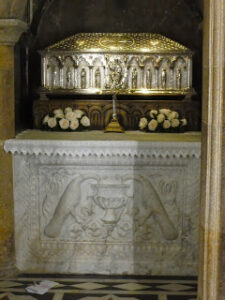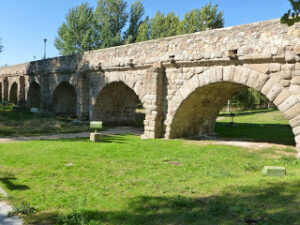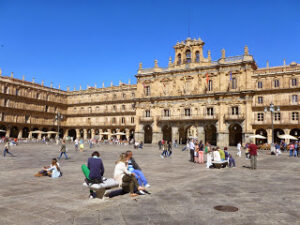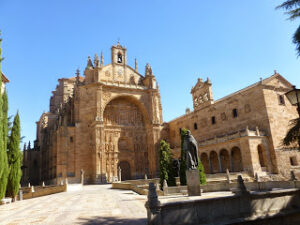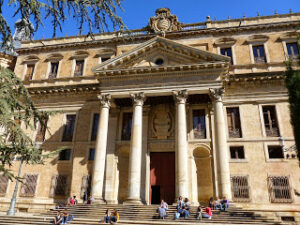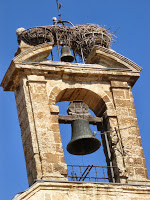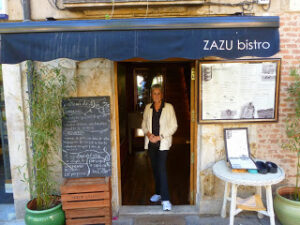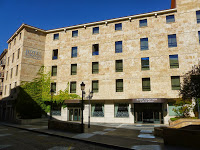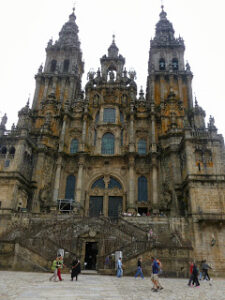
SANTIAGO DE COMPOSTELA and SALAMANCA
We visited many churches, cathedrals and basilicas on this trip but nothing compared to what we saw in Santiago de Compostela and Salamanca.
According to legend, the Apostle James brought Christianity to the Iberian peninsula in 44 AD. Upon his return to Jerusalem, he was martyred. Legend claims that two of his disciples brought his body back to Spain and buried it in what is now known as the city of Santiago de Compostela. The site of the tomb was forgotten over time but in 814 a local peasant rediscovered it. The bishop authenticated the relics and with that a Holy City and eventual World Heritage site was born.
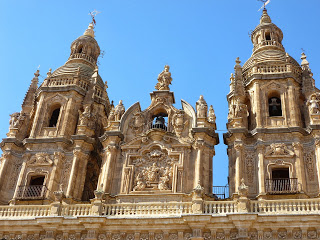
The Way of St. James became one of the most important Christian pilgrimages in medieval times. The giant incense burner in the Cathedral was used to overpower the odor of the early pilgrims. Today hundreds of thousands of modern day pilgrims make their way to the city as it is considered one of the most important Christian sites in the world.
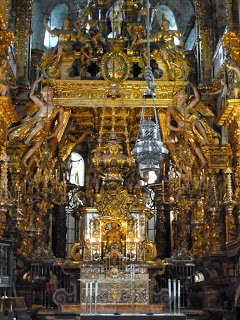
Sunlight shimmers off sandstone buildings in Salamanca making the 'golden city' one of the most beautiful in Spain. A Roman bridge with 15 granite stone arches spans the Tormes River and leads into the city. It was built in 89 AD and reconstructed in the 17th century.
Numerous pedestrian walkways wander around and through the Old Town which was declared a World Heritage site in 1988. In the center, the huge Plaza Mayor is filled with shops, outdoor cafes and people.
Salamanca is especially known for its old and new cathedrals, just 2 of many churches in the city, and its university. Founded in 1812, the University of Salamanca is the oldest higher learning institution in Spain.
Salamanca was a lovely place to spend my birthday. Beautiful city, ideal weather and a great lunch at a charming little restaurant.
